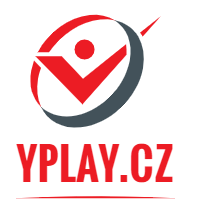
The Chromecast s Google TV Je to jeden z našich oblíbených nástrojů pro získávání zvukového a obrazového obsahu na velké obrazovce pomocí HDMI, ale je to takFunkce S lze ještě rozšířit pomocí příslušného příslušenství – konkrétně rozbočovače USB-C.
Pokud si zakoupíte rozbočovač, který dokáže přenášet energii do Chromecastu pomocí Google TV, máte okamžitě spoustu portů, se kterými můžete hrát. Z toho, co jsme viděli Ostatní lidé Kdo to zkusil, Potřebujete nabíječku s výkonem alespoň 45 W, což jsme použili v našich testech.
Některé z těchto úprav vyžadují přístup k souboru Vývojářské možnosti Seznam je dole Systém V nastavení. Chcete-li to povolit, přejděte do nastavení a vyberte Systém, Pak Kolem, Poté vyberte OS Android TV Sedmkrát (uvidíte zprávu, když jste to udělali správně). To odhaluje několik hardwarových možností low-end, ke kterým byste jinak neměli přístup.
Příprava hardwaru
Pokud máte rozbočovač USB-C s napájecím připojením, které lze přenést do vašeho Chromecastu, a upgradovaný napájecí adaptér, který poskytuje dostatečnou elektrickou energii, testy, které jsme zde uvedli, by měly fungovat tak, jak je inzerováno. pro referenci, this Aukey hub was the one we picked up for the job.
G/O Media may get a commission
The more devices you connect to the hub, the more power you’re going to need. Some trial and error might be involved—with functionality like this that’s only supported semi-officially, everything might not work perfectly first time around.

Playing local video
Once you’ve plugged in the USB-C hub and your Chromecast with Google TV, you can also attach a USB drive, as long as it’s formatted as FAT32 (which you can do in Windows or macOS). The storage should automatically be viewable and accessible to any apps on your Chromecast that can browse for files.
Install an app such as the VLC media player, and you can then open up images, audio and video from your USB drive. Any file management tool you install will be able to see the external storage, too, and you can launch files that way as well.
Attaching peripherals
Another way you can use a USB-C hub plugged into your Chromecast with Google TV is to attach a keyboard and a mouse. It makes entering text much easier, and allows you to better control apps that you’ve sideloaded that weren’t meant for the device (like a web browser, for example).
There’s not much to the setup here, as once you connect a keyboard and mouse to the hub they should be recognized and work immediately. You might find some bugginess in certain apps, but based on our testing, you should be able to type and click away as much as you like.

Making video calls
Google Duo shows up as an available app when you search for it on the Chromecast with Google TV, so once it’s installed all that you’re missing is a webcam. Slot a webcam into a spare port on your USB-C hub and you’ll be up and running—as long as you’re using a power brick with enough wattage to keep everything switched on.
Duo should automatically recognize your webcam, so you can put through your audio and video calls as needed (note the Duo app needs to be open on your Chromecast for incoming calls to appear). You can make audio-only calls without a webcam, too, using the microphone in the Chromecast remote.
Expanding storage
We’ve managed playing files off of attached USB drives, and those USB drives can also be used for the Chromecast to save apps and other files, if needed. Again, attached drives will need to be formatted as FAT32 for the Chromecast dongle to recognize them, which can be done from either Windows or macOS.
With your drive attached, open Settings and pick System, Developer options, and Force allow apps on external. Next, go to System, then Storage, and pick your USB drive. Select Erase & format as device storage and the Chromecast will subsequently be able to use it (this means you won’t be able to play local files from it anymore, however).
You’ll be invited to move data and apps over right away, but you can also do it later. From Settings, choose Apps, then See all apps, and pick the app you want to move. Select the app to get to its options, and select Storage used to move it.

Boosting internet speeds
Some users have bemoaned the lack of an Ethernet adapter for the Chromecast with Google TV—adapters are available for Předchozí modely Chromecastu—Ale to je další problém, který lze vyřešit přidáním rozbočovače USB-C. Pokud si koupíte rozbočovač, který obsahuje ethernetový port, Můžete jej připojit přímo k routeru.
To znamená, že připojení k internetu by mělo být rychlejší a stabilnější – možná výrazně, v závislosti na stavu wifi, a to bude mít rozdíl při sledování filmů, Hry atd. Jakmile je vše připojeno, měl by Chromecast automaticky rozpoznat kabelové připojení, ale můžete to zkontrolovat na adrese Síť a internet V nastavení.

„Unapologetický analytik. Rozzuřeně skromný kávový evangelista. Hráč. Nelze psát s boxerskými rukavicemi. Student. Podnikatel.“
You may also like
-
Aktualizace Stardew Valley 1.6.4 Poznámky k opravě: Nové doly a rybí šílenství
-
Hráči Zelda: Tears of the Kingdom strávili 870 hodin dokončením každé svatyně a prozkoumáním celého Hyrule, aby vytvořili strašidelně krásnou mapu stop.
-
Patch 7 pro Baldur's Gate přidá 3 nové konce
-
Fallout Fandom říká, že ghúl Waltona Gogginse je horký
-
Tyto nové funkce nabíjení EV jsou k dispozici na Mapách Google

